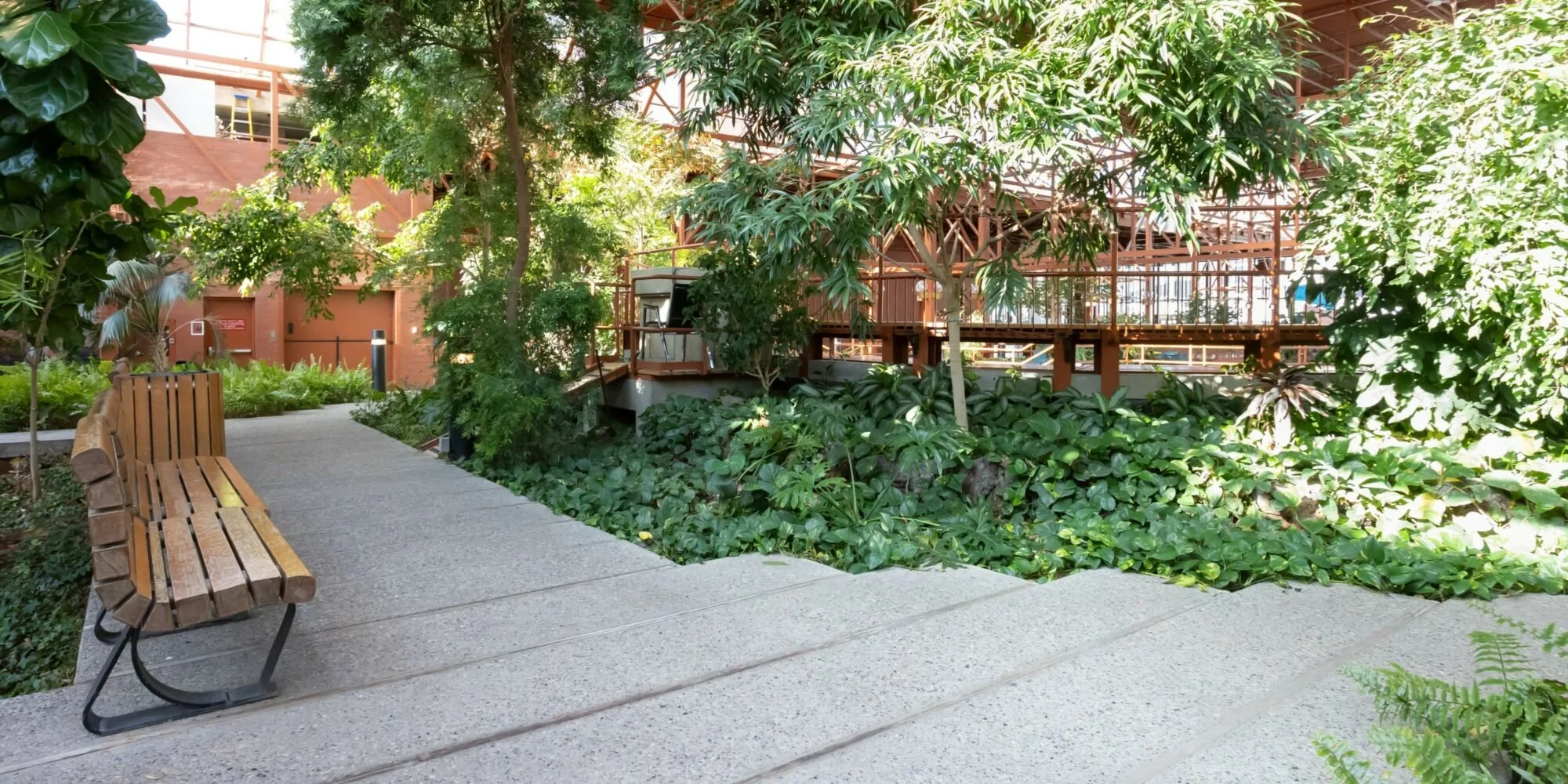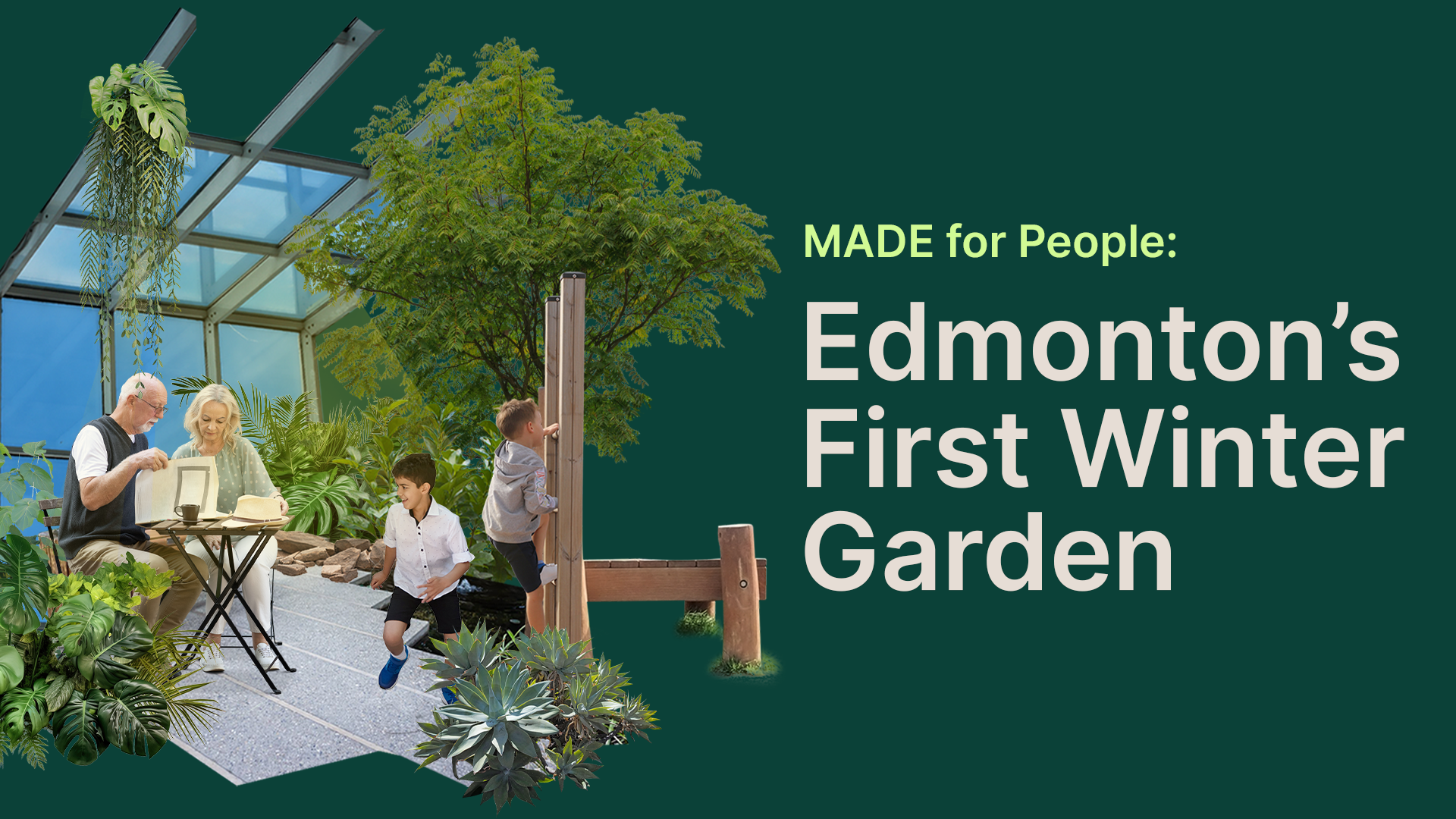MADE for People: Edmonton’s First Winter Garden
Did you know the land the Lee Pavilion is on was originally designated as public parkland, before it was enclosed and repurposed to hold the Maclab Theatre? For nearly forty years, this space has existed in relative limbo, caught between its intended public life and its present quiet.
Beneath its glass canopy, you can still sense the ghost of that early idea: an atrium meant not just for passage, but for pause—a place where nature, light, and architecture once promised a shared refuge from the winter city beyond.
Can Edmonton truly be a Winter City without winter assets like this—spaces that invite warmth, gathering, and sensory reprieve?
If reclaimed, could the Lee Pavilion become more than a forgotten interior—could it become the Winter Garden our city has long imagined?
“[A] dream houses of the collective.”
— Walter Benjamin
What is a winter garden?
A threshold space between interior and exterior worlds. A glass house where sunlight, humidity, and foliage conspire to suspend the logic of winter—a momentary utopia of warmth and life. It is an architecture of reprieve, a counterpoint to the cold rationality of the city outside.
Why do we need Winter Gardens in Winter Cities?
They are spaces of sensory hospitality, where the body and the spirit can thaw. Like a hearth in the public realm, they offer a temporary invitation to linger, to reconnect, to feel. Here, the everyday act of gathering becomes a quiet form of resistance to isolation and seasonal austerity.
How might we make this permanent?
By treating interior civic spaces not as backdrops, but as public commons—places where warmth, light, and social connection, we recognized them as essential infrastructures of northern urban life.



